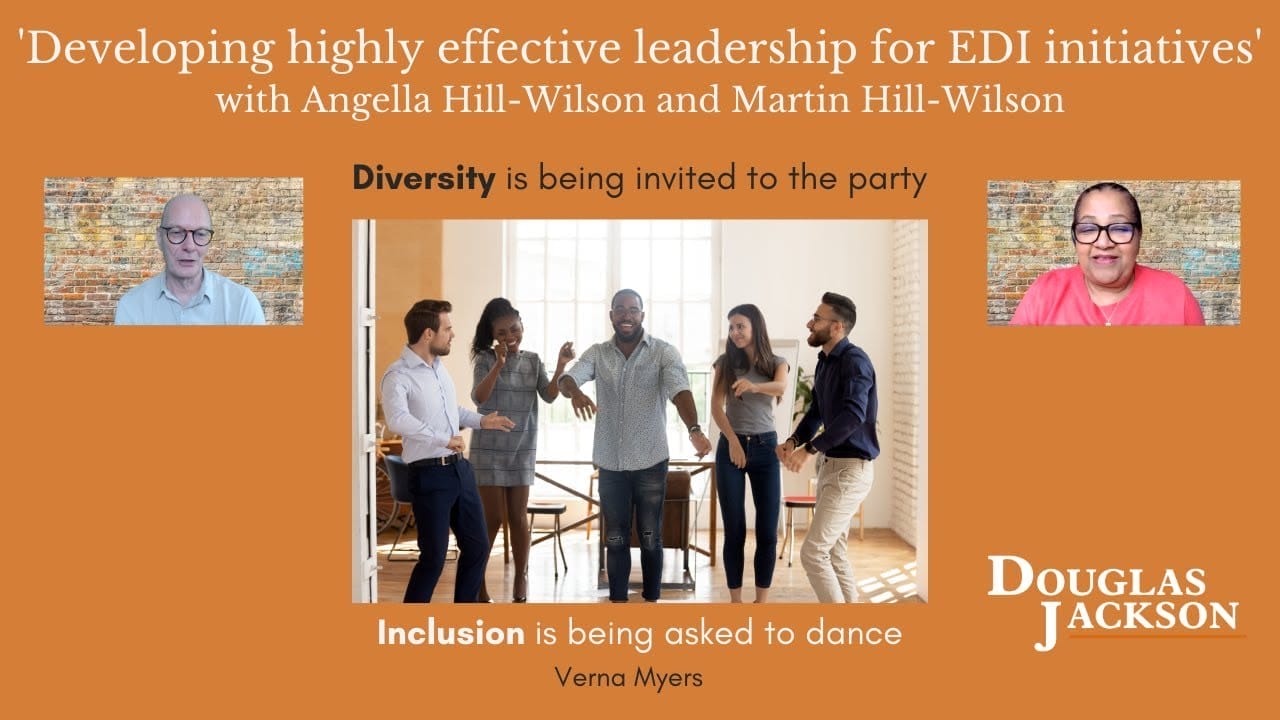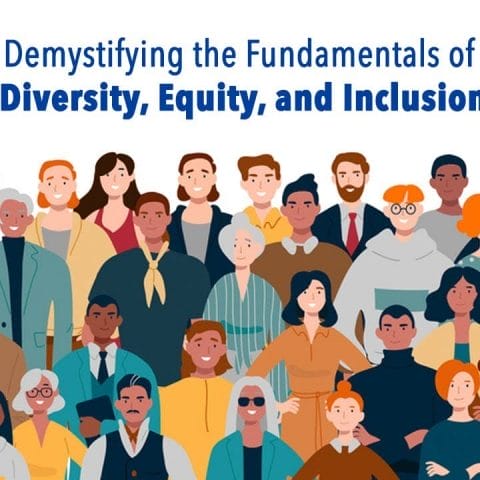Did you know that businesses that prioritize diversity training are 15% more likely to experience increased financial performance? Diversity training goes beyond being politically correct – it creates a workplace culture of inclusivity, respect for differences, and true understanding. In today’s global and diverse society, developing effective diversity training is crucial for creating a happier, more skilled workforce and driving organizational success.
Key Takeaways:
- Effective diversity training leads to happier employees, increased expertise, reduced hiring costs, and improved financial performance.
- Diversity training makes employees feel included and valued, resulting in higher retention rates and increased productivity.
- To create effective diversity training, focus on common goals, confronting unconscious bias, and fostering a culture of inclusion.
- Utilize pedagogical strategies like discussions, activities, and reflective learning to enhance diversity training outcomes.
- Long-term diversity training with ongoing assessments and leadership support is more effective in fostering lasting change.
The Importance of Diversity Training

Diversity training is a crucial practice for organizations aiming to create inclusive and thriving workplaces. By prioritizing diversity training best practices and implementing effective strategies, businesses can reap numerous benefits.
One of the key advantages of diversity training is that it makes employees feel included and valued. When individuals from diverse backgrounds feel recognized and respected, it leads to higher employee retention rates and increased productivity. According to a study by Gallup, companies with diverse and inclusive workforces experience 22% higher profitability compared to their less diverse counterparts.
Beyond financial gains, diversity training also helps organizations attract and retain top talent. In an increasingly diverse world, job seekers actively seek out companies that prioritize inclusivity. By showcasing robust diversity training programs, businesses can position themselves as desirable employers and create a competitive advantage in recruitment.
Furthermore, diversity training benefits extend beyond the individual level. Organizations that invest in diversity training experience improved performance and success. By embracing and valuing differences among employees, teams can leverage diverse perspectives and ideas to drive innovation and creativity.
“Diversity is the mix, and inclusion is making the mix work,” says Andrés Tapia, global DEI (Diversity, Equity, and Inclusion) strategist. By nurturing a culture of inclusion through diversity training, organizations can foster collaboration, build stronger teams, and enhance overall organizational effectiveness.
To learn more about the importance of diversity training in the workplace, visit https://extension.psu.edu/diversity-training-in-the-workplace.
“Diversity training is not just a check-the-box activity. It’s an ongoing commitment to building an inclusive environment.”
Creating Effective Diversity Training

To create impactful diversity training and improve diversity training outcomes, organizations must go beyond simply presenting a list of dos and don’ts. Effective diversity training is rooted in actively creating common goals, confronting unconscious bias, and fostering a culture of inclusion.
First and foremost, diversity training should encourage the establishment of common goals that bring employees together. By aligning individuals with a shared purpose, the training can promote collaboration and mutual understanding.
Confronting unconscious bias is another crucial aspect of effective diversity training. It is essential to help participants identify and challenge their preconceived notions, stereotypes, and biases. This process enables individuals to develop a more inclusive mindset and behavior.
Fostering a culture of inclusion is vital for long-term success. Diversity training programs should emphasize the importance of actively welcoming and valuing different perspectives, experiences, and contributions from all individuals within the organization.
Long-Term, Inclusive Approach
To optimize the impact of diversity training, it is recommended to provide long-term training that spans multiple hours or sessions. Short, one-time sessions are less effective in creating lasting change.
In addition, incorporating assessment measures is crucial for improving diversity training outcomes. Assessment allows organizations to measure the impact of the training, identify areas for improvement, and track progress over time. By gathering data on the effectiveness of the training program, organizations can make informed decisions on how to refine and enhance their efforts.
Furthermore, ensuring the demographic composition of both trainers and trainees is diverse is essential. The inclusion of diverse perspectives within the training process creates a more inclusive learning environment and helps participants understand different experiences and viewpoints.
By implementing these strategies, organizations can create diversity training programs that have a profound impact on their employees, fostering a culture of inclusion and improving diversity outcomes throughout the workplace.
References:
- Johnson, L. G., & Johnson, R. T. (2019). Teaching and learning through constructive conflict. Harvard Education Press.
- Martin, R., & Thomas, D. (). The 3-part video series: Bias, diversity, & inclusion in the workplace. [Video series]. YouTube.
- Smith, J. (2018). Building a culture of inclusion: The power of employee resource groups. LinkedIn Learning Solutions.
Pedagogical Strategies for Effective Training

When it comes to diversity training, utilizing the right pedagogical strategies can significantly impact its effectiveness in maximizing diversity training results and enhancing overall outcomes. By incorporating a variety of techniques, trainers can create an engaging and transformative learning experience for participants.
Reflective Learning
One powerful pedagogical tool is reflective learning. This approach encourages trainees to reflect on their own attitudes, biases, and thought patterns, fostering self-awareness and personal growth. Through introspection, individuals can begin to recognize and challenge their preconceptions, promoting a deeper understanding of diversity and inclusion.
Conversational Learning
A conversational learning approach is also valuable in diversity training. By encouraging open discussions, participants can engage in meaningful dialogue, sharing perspectives, and learning from one another. This interactive environment promotes empathy, respect, and a sense of collective responsibility in creating an inclusive workplace culture.
Experiential Learning
Experiential learning is another effective pedagogical strategy in diversity training. By involving trainees in real-world scenarios and activities that mirror workplace diversity dynamics, individuals can gain firsthand experience in navigating diverse environments. This hands-on approach helps develop practical skills, fosters empathy, and encourages the application of diversity principles in a practical setting.
“The power of pedagogical diversity lies in its ability to cater to different learning styles, engage participants, and promote a deeper understanding of diversity and inclusion.” – Diversity Training Expert
Integrating these pedagogical strategies ensures a comprehensive and well-rounded diversity training program. By combining reflective learning, conversational learning, and experiential learning, trainers can reinforce key concepts, challenge biases, and transform behaviors over time.
The table below highlights the key pedagogical strategies and their respective benefits:
| Pedagogical Strategy | Benefits |
|---|---|
| Reflective Learning | Encourages self-awareness and challenges biases |
| Conversational Learning | Promotes dialogue, empathy, and respect |
| Experiential Learning | Develops practical skills and promotes application of diversity principles |
By incorporating these pedagogical strategies into diversity training programs, organizations can create a more inclusive and effective learning experience that maximizes diversity training effectiveness and enhances overall training results.
Long-Term Approach to Diversity Training
When it comes to diversity training, taking a long-term approach is key to achieving lasting change in the workplace. By implementing strategies aimed at enhancing diversity training results, organizations can foster an inclusive environment that benefits both employees and the overall business.
Ongoing performance reviews and feedback structures play a critical role in the long-term success of diversity training. Regular feedback allows organizations to identify areas for improvement and make necessary adjustments to the training program. This iterative approach ensures that training content remains relevant and impactful.
Mentoring programs are another effective tool in enhancing diversity training results. Pairing employees from both the majority and minority groups can facilitate meaningful connections and promote mutual understanding. These mentorship relationships provide opportunities for diverse perspectives to be shared, fostering a more inclusive work environment.
Self-directed learning is an important component of long-term diversity training. Encouraging employees to take ownership of their learning journey empowers them to continue their education and development beyond the training sessions. This can be achieved through access to resources, online courses, and other learning opportunities.
Setting goals is essential for driving progress and achieving desired outcomes in diversity training. By establishing clear goals related to diversity and inclusion, organizations can align their efforts and track their progress. Goals provide a sense of direction and enable organizations to measure the effectiveness of their diversity training initiatives.
Maximizing the Learning Experience
One effective strategy for successful diversity training is to ensure that trainers possess knowledge of the psychology of attitude and stereotype formation. This expertise enables trainers to effectively facilitate discussions and address any potential backlash that may arise during the training sessions.
In addition, creating a diverse team of trainers that represents both the majority and minority groups can enhance the learning experience. This diversity in perspectives and experiences fosters a more inclusive environment and allows for a broader range of insights to be shared.
By incorporating these long-term strategies, organizations can ensure that diversity training initiatives go beyond mere compliance and superficial activities. Instead, they can foster an environment of understanding, respect, and inclusivity that permeates all aspects of the workplace.
| Benefits of Long-Term Diversity Training | Strategies for Enhancing Training Results |
|---|---|
| 1. Foster lasting change in the workplace | 1. Implement ongoing performance reviews and feedback structures |
| 2. Create an inclusive work environment | 2. Establish mentoring programs that pair employees from diverse backgrounds |
| 3. Encourage continuous self-directed learning | 3. Set clear diversity and inclusion goals |
| 4. Drive progress and measure effectiveness | 4. Ensure trainers have knowledge of attitude and stereotype formation |
| 5. Create a diverse team of trainers |
By adopting a long-term approach and implementing these strategies, organizations can enhance the impact of their diversity training efforts and create a workplace that is truly inclusive and diverse.
Addressing Backlash in Diversity Training
During diversity training, it is not uncommon for backlash to occur, manifesting as resistance, resentment, or emotional reactions. To ensure the success of the training and create a positive learning environment, it is important to address and manage this backlash effectively. Employing the right strategies can help enhance diversity training results and foster a more inclusive workplace.
One important strategy is to avoid a confrontational approach and instead focus on constructive and open dialogue. Encourage participants to express their thoughts and concerns while promoting respectful communication. This approach allows for the exploration of diverse perspectives and encourages a deeper understanding of different experiences.
Setting clear ground rules for discussions is another crucial step in managing backlash. Establish guidelines that promote productive and civil conversations, ensuring that all participants feel heard and valued. Encourage active listening, without judgment or interruption, to facilitate a safe and inclusive space for dialogue.
Journaling and other reflective exercises can also be valuable tools in addressing backlash. Encourage participants to engage in self-reflection and examine their thoughts and attitudes towards diversity and inclusion. This introspective practice can help individuals challenge their biases and develop a greater appreciation for diversity.
“True diversity training fosters a culture of empathy and understanding, where individuals can challenge their preconceived notions and grow together.”
To minimize backlash, it is essential to approach diversity training with thoughtfulness and empathy. Recognize that individuals may have different starting points and experiences, and be patient in guiding them towards a more inclusive mindset. Emphasize the importance of diversity and the positive impact it has on both individuals and organizations.
Building an Inclusive Learning Environment
Creating an inclusive learning environment is crucial for addressing backlash in diversity training. By implementing the following strategies, trainers can enhance the effectiveness of the training and promote a sense of belonging:
- Facilitate open discussions and encourage active participation from all attendees.
- Create opportunities for individuals to share personal stories and experiences.
- Promote collaboration and teamwork among trainees from diverse backgrounds.
- Provide resources and materials that showcase the benefits of diversity and inclusion.
- Invite guest speakers from underrepresented groups to share their perspectives.
By implementing these strategies, trainers can create an environment that fosters understanding, empathy, and appreciation for diversity, minimizing backlash and maximizing the impact of diversity training.
Addressing backlash in diversity training requires a thoughtful and empathetic approach. By utilizing strategies that promote constructive dialogue, setting clear ground rules, and encouraging self-reflection, trainers can minimize resistance and create a positive learning environment. Additionally, building an inclusive learning environment through open discussions, collaboration, and diverse perspectives can enhance the effectiveness of diversity training. With these strategies in place, organizations can experience the full benefits of a diverse and inclusive workplace.
Training Assessment and Evaluation
Assessing and evaluating diversity training is crucial in order to measure its effectiveness and ensure that it aligns with diversity training best practices, maximizing diversity training effectiveness.
Organizations can utilize various forms of assessment to gather valuable feedback and track the impact of the training on attitudes and behaviors. Common assessment methods include surveys, quizzes, and follow-up interviews with trainees to gauge their understanding and retention of the training content.
Regular evaluation facilitates continuous improvement and adjustment of the training program, allowing organizations to refine their approach and address any areas of improvement. By gathering feedback from trainees, organizations can gain insights into the training’s strengths and weaknesses and make necessary adjustments to maximize its impact.
“Evaluation is the key to unlocking the full potential of diversity training. It provides valuable insights into the effectiveness of the program and helps organizations optimize their diversity training initiatives for better results.”
In addition to assessing trainees’ knowledge and understanding, evaluating diversity training should also involve monitoring changes in attitudes and behaviors. This can be achieved through pre- and post-training assessments, allowing organizations to measure the training’s impact on promoting diversity and inclusion within the workplace.
While quantitative data provides measurable outcomes, qualitative feedback is equally important in gaining a deeper understanding of trainees’ experiences and perceptions. Follow-up interviews or focus group discussions can provide rich insights into the long-term effects of the training and areas where additional support may be needed.
Conducting ongoing assessment and evaluation of diversity training demonstrates a commitment to enhancing its effectiveness and outcomes. By continuously monitoring and analyzing the results, organizations can ensure that their diversity training program remains aligned with best practices and maximizes its impact on fostering an inclusive workplace.
Key Elements of Effective Diversity Training Assessment
| Assessment Method | Description |
|---|---|
| Surveys | A questionnaire-based approach to gather quantitative and qualitative feedback on trainees’ perceptions, knowledge, and experiences. |
| Quizzes | Short assessments to measure trainees’ understanding of key diversity concepts and principles. |
| Follow-up interviews | One-on-one or group discussions with trainees to gather in-depth insights into their experiences, attitudes, and behavioral changes. |
| Pre- and post-training assessments | Comparative assessments conducted before and after training to measure changes in knowledge, attitudes, and behaviors. |
The Role of Leadership in Diversity Training
Leadership plays a crucial role in the effectiveness of diversity training. It is important for leaders to model inclusive behavior and create a culture of diversity and inclusion throughout the organization. Without the support and commitment of leadership, diversity training can be undermined by day-to-day practices. Leadership should be actively involved in diversity training initiatives, providing resources, support, and ongoing reinforcement of the training content.
Effective diversity training requires the commitment and engagement of leaders at all levels. By prioritizing diversity training best practices, organizations can enhance the effectiveness of their programs and achieve better results. Here are some key ways in which leadership can contribute to the success of diversity training:
1. Modeling Inclusive Behavior
Leaders should serve as role models by demonstrating inclusive behavior in their interactions with employees. This includes being respectful of diverse perspectives, actively listening to others, and valuing different ideas and contributions. By consistently exhibiting inclusive behavior, leaders set the tone for the entire organization and reinforce the importance of diversity and inclusion.
2. Creating a Culture of Diversity and Inclusion
Leadership should work to create a culture that embraces diversity and fosters inclusion. This involves establishing policies and practices that promote diversity in recruitment, hiring, and promotion processes. By embedding diversity and inclusion principles into the organization’s values and mission, leaders can help ensure that diversity training aligns with broader organizational goals and strategies.
3. Providing Resources and Support
Leaders should allocate the necessary resources and provide ongoing support for diversity training initiatives. This includes providing funding for training programs, securing qualified trainers or consultants, and ensuring access to relevant educational materials. By investing in diversity training, leaders demonstrate their commitment to creating an inclusive workplace and provide employees with the tools they need to succeed.
4. Ongoing Reinforcement of Training Content
Leadership should reinforce the messages and concepts covered in diversity training on an ongoing basis. This can be achieved through regular communication with employees, highlighting the importance of diversity and inclusion in staff meetings, newsletters, and other internal communications. By consistently reinforcing the content of diversity training, leaders help to embed the principles of diversity and inclusion into the organizational culture.
By actively participating in and supporting diversity training initiatives, leaders can enhance the effectiveness of these programs and create a workplace that values and empowers all employees. Their commitment to diversity training best practices is essential in driving positive change and improving the overall outcomes of diversity training efforts.
Next, we will explore how diversity training can be tailored to address specific groups within the organization, such as LGBTQ+ individuals, racial minorities, or individuals with disabilities.
Addressing Specific Groups in Diversity Training
When it comes to diversity training, organizations have the opportunity to address the unique challenges and experiences of specific groups within their workforce. Tailoring diversity training programs to focus on the needs of LGBTQ+ individuals, racial minorities, or individuals with disabilities can result in a more impactful and meaningful training experience.
By acknowledging and addressing the specific obstacles faced by these groups, organizations can foster a more inclusive and supportive workplace environment. Training content can be tailored to provide insights, strategies, and resources that directly resonate with the targeted group.
For example, diversity training for LGBTQ+ individuals can focus on understanding LGBTQ+ terminology, promoting inclusivity, and navigating workplace dynamics. Training for racial minorities can address topics such as unconscious bias, microaggressions, and allyship. Similarly, diversity training for individuals with disabilities can cover accessibility accommodations, promoting empathy, and understanding visible and invisible disabilities.
However, it is important to strike a balance in diversity training programs. While addressing specific groups, it is vital to include broader diversity topics to ensure that all employees feel included and engaged. This approach reinforces the connection between different groups and promotes a sense of unity within the workforce.
Key Strategies for Successful Diversity Training:
- Identify the unique challenges faced by specific groups within the workforce.
- Tailor diversity training programs to address the needs of targeted groups.
- Provide insights, strategies, and resources that resonate with the experiences of the targeted group.
- Include broader diversity topics to promote unity and inclusivity.
- Encourage open dialogue and discussion to create a safe and supportive learning environment.
“Addressing the specific challenges and experiences of various groups within the workplace fosters inclusivity and promotes a strong sense of unity among employees.”
By adopting these strategies, organizations can design diversity training programs that empower employees, enhance understanding, and foster a culture of inclusivity and respect.
| Group | Focus of Diversity Training |
|---|---|
| LGBTQ+ individuals | Understanding LGBTQ+ terminology, promoting inclusivity, navigating workplace dynamics |
| Racial minorities | Addressing unconscious bias, microaggressions, promoting allyship |
| Individuals with disabilities | Accessibility accommodations, promoting empathy, understanding visible and invisible disabilities |
Conclusion
Effective diversity training is crucial for fostering an inclusive and successful workplace. By implementing diversity training best practices, organizations can enhance diversity training results and create a more diverse, inclusive, and productive work environment.
Utilizing pedagogical strategies, such as discussions, activities, and lectures, can maximize the effectiveness of diversity training. By engaging trainees in reflective and experiential learning, their behaviors, attitudes, and biases can be positively influenced over time.
Addressing backlash in diversity training is essential for creating a positive learning environment. By promoting constructive and open dialogue, establishing clear ground rules for discussions, and incorporating reflective exercises, organizations can minimize resistance and resentment.
Leadership support and ongoing evaluation play a crucial role in the long-term success of diversity training initiatives. When leaders model inclusive behavior, provide resources, and actively reinforce training content, diversity training becomes ingrained in the organization’s culture and drives lasting change.
This opinion piece explores the importance of effective diversity training in today’s workplace. By prioritizing diversity training and following these best practices, organizations can create a workplace that is not only diverse, but also inclusive and thriving.
FAQ
How can I develop diversity training that is actually effective?
To develop effective diversity training, it is important to go beyond a list of dos and don’ts. Focus on creating common goals, confronting unconscious bias, and fostering a culture of inclusion. Utilize long-term training that spans multiple hours or sessions and include assessment to measure the impact of the training.
Why is diversity training important?
Diversity training is important because it makes employees feel included and valued, leading to higher retention rates and increased productivity. Companies with diverse workforces have higher financial returns. It also helps attract and retain top talent and creates a culture of inclusivity.
How can I create effective diversity training?
Effective diversity training should utilize multiple pedagogical techniques such as discussions, activities, and lectures. It should also incorporate reflective learning, conversational learning, and experiential learning. The trainers should have knowledge of the psychology of attitude and stereotype formation.
What are the pedagogical strategies for effective diversity training?
Pedagogical strategies for effective diversity training include discussions, activities, and lectures. Reflective learning, where trainees reflect on their own attitudes and thought patterns, can be effective. Conversational learning and experiential learning, where trainees engage in open discussions and real-world scenarios, are also effective.
What is the long-term approach to diversity training?
The long-term approach to diversity training includes ongoing performance reviews and feedback structures, mentoring programs, self-directed learning, and goal setting. It is important to pair trainers that represent both the majority and minority groups to enhance the learning experience.
How can I address backlash in diversity training?
To address backlash in diversity training, avoid a confrontational approach and focus on constructive and open dialogue. Establish clear ground rules for discussions and incorporate journaling and reflective exercises. A thoughtful and empathetic approach can help minimize backlash and create a positive learning environment.
How do I assess and evaluate diversity training?
Assess and evaluate diversity training by utilizing surveys, quizzes, or follow-up interviews. Regular evaluation allows for continuous improvement and adjustment of the training program. Gather feedback from trainees and track the impact of the training on attitudes and behaviors.
What is the role of leadership in diversity training?
Leadership plays a crucial role in the effectiveness of diversity training. Leaders should model inclusive behavior and create a culture of diversity and inclusion throughout the organization. They should be actively involved in diversity training initiatives, providing resources, support, and ongoing reinforcement of the training content.
How can I address specific groups in diversity training?
To address specific groups in diversity training, focus on their unique challenges and experiences. Tailor the training to address the needs of LGBTQ+ individuals, racial minorities, or individuals with disabilities. However, it is important to include broader diversity topics to ensure that all participants feel included and engaged.
Why is diversity training essential for creating an inclusive workplace?
Diversity training is essential for creating an inclusive workplace because it fosters a culture of inclusivity, respects diverse approaches, and builds understanding. It leads to happier employees, increased expertise, reduced hiring costs, and improved financial performance.





